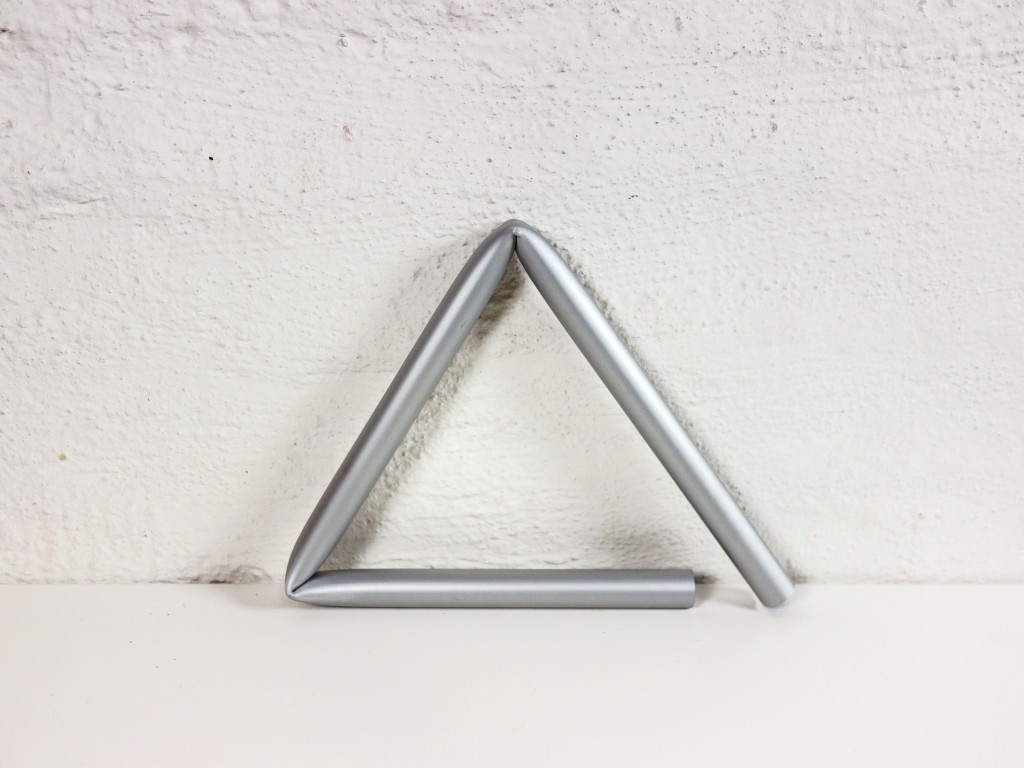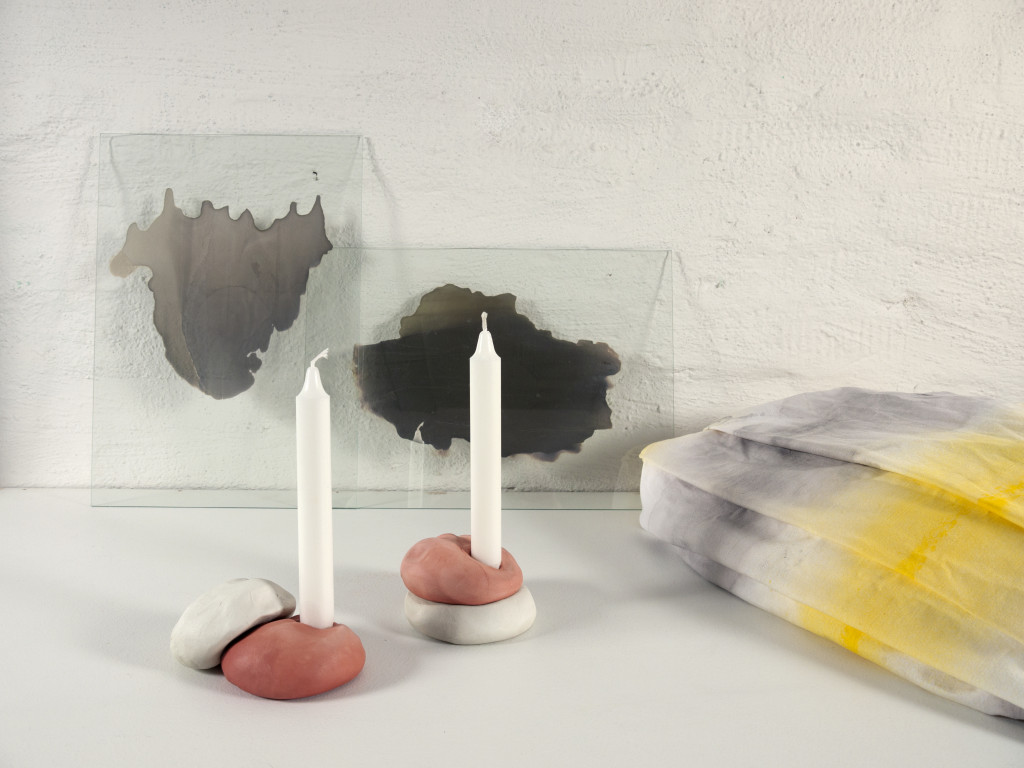-
3 to 5 Seconds
– Rapid handmade production
WATCH THE PRODUCTION VIDEO PART II
3 to 5 Seconds is like many other of Jenny Nordberg’s projects part of a larger and ongoing work about how we produce and consume today, how we’ve done historically and how we could do it in the future. In the project 3 to 5 Seconds she examines how different properties from the handmade and mass produced can be combined. 3 to 5 seconds is about bringing together contradictions and hard to achieve qualities. The project combines the uniqueness of the handmade and the speed of the mass produced. Is it possible to make one of a kind handmade items really fast?
The various production methods in the 3 to 5 Seconds project all have in common that every moment should be made within three to five seconds. The project was begun in the summer of 2014 and is continuously ongoing. More objects and processes will be added in onwards. Read more about the three initial production methods below.
Double casting stone (2016)
Clock, jesmonite and lava stoneAxhammer bending (2016)
Pot stand, anodised aluminiumPunch and roll (2016)
Lamp, paper and electrical fittingExplosion graphics (2015)
Walk around the city of Malmö the day after New Years Eve and you will find the ground covered in the remains of fireworks. Jenny Nordberg uses fireworks attached with tape to a thick paper to create unique prints. Different types of fireworks create different looks and colours.Hook from thumb (2015)
By quickly pressing down the thump into wet clay and then pouring melted tin into it a hook is shaped. Every hook is different but holds the same fingerprint.Hand force (2014)
Clay – a classic and slow material with time a consuming process from material to finished object. The clay used in this project is a quick drying ceramic clay that does not require burning, so called study clay. The shape of the candle holder is determined by the hand, force and direction, the entry point of the candle and the original shape of the two lumps of clay.Pour out a puddle (2014)
In the traditional process of making a mirror, Jenny Nordberg eliminated all unnecessary moments and demands for perfection and total coverage. The steps left to achieve a mirror are then left to mixing three liquids, pouring the mixture onto a piece of glass and wait for five minutes. The result is a multi dimensional mirror effect of silver in indefinite puddle shape.Double staining (2014)
The goal of the double staining method is to produce both patterns and several colours in as short time as possible. The effect of dipping a folded piece of cloth in two different dyes and then hang it to dry gives both stripes, a tie dye like pattern effect and three colours with various wash effects.Cut and bend (2014)
By altering diagonal and strait cuts followed by a single bending movement the book ends are shaped. The material is aluminium, all ready precut stripes from the local hardware store, with different textures and coatings.Items from the 3 to 5 Seconds project can be bought at Center of Commerce.
3 to 5 seconds är som många andra av Jenny Nordbergs projekt en del av det större och fortlöpande arbete som handlar om hur vi producerar och konsumerar idag, hur vi gjort historiskt och hur vi skulle kunna göra framöver. I projektet 3 to 5 seconds undersöker hon hur olika egenskaper från det handgjorda och det massproducerade kan kombineras. 3 to 5 seconds handlar om att föra ihop motsägelser och svåruppnådda egenskaper. Projektet kombinerar det unika i det handgjorda och det snabba i det massproducerade. Går det att göra unika handgjorda objekt skitfort?
Gemensamt för de olika produktionsmetoderna i projektet 3 to 5 seconds är att varje moment ska ligga på en produktionstid mellan tre till fem sekunder. Projektet tog sin början under sommaren 2014 kommer att pågå framöver. Fler objekt och processer kommer att tillkomma framöver. Initialt har tre produktionsmetoder skapats, läs mer om varje nedan.
Handkraft
Lera, ett klassiskt och långsamt material med tidskrävande process från material till färdigt objekt. Leran använd i detta projekt är en snabbtorkande keramisk lera som inte kräver bränning, så kallad studielera. Ljusstakens form bestäms av handen, kraften och riktningen, ljusets isättningspunkt samt de båda lerklumparnas ursprungsform.Hälla ut en pöl
I den traditionella processen att göra en spegel har Jenny Nordberg eliminerat alla umbärliga moment samt krav på perfektion och totalt täckningsområde. Kvar för att få en spegel är då kvar att blanda tre vätskor, hälla ut blandningen på en glasskiva och vänta i fem minuter. Resultatet är en flerdimensionell spegeleffekt av silver i obestämbar pölform.Dubbelinfärgning
Målet med dubbelinfärgningsmetoden är att på textil framställa både mönster och flera färger på kortats möjliga tid. Effekten av att doppa ett vikt tygstycke i två olika färgbad och sedan hänga upp det på tork ger både ränder, en batikliknande mönstereffekt samt tre kulörer med diverse laverande effekter sinsemellan.Klipp och bock (2014)
Materialet är färdigklippta aluminiumbitarna med olika stuktur och ytinfärgningar som kommer från den lokala byggvaruhandeln. Bokstöden får sin form genom att diagonala och raka klipp alterneras och sedan efterföljs av en bockning.Explosionsgrafik (2015)
Gå runt i Malmö dagen efter nyårsafton och marken är täckt av resterna från fyrverkerier och smällare. Jenny Nordberg använder smällare fästa med tejp på entt tjockt papper för att skapa unika tryck. Olika typer av smällare och fyrverkerier genererar olika utseenden och färger.Krok av tumme (2015)
Genom att snabbt trycka ner tummen i våt lera och sedan hälla smält tenn i formas en krok. Varje krok är unik men har samma fingeravtryck.Objekt från 3 to 5 Seconds-projektet kan köpas på Center of Commerce.
-


 Double casted lava stone clocks
Double casted lava stone clocks Axhammer bended trivet
Axhammer bended trivet Punched lamps
Punched lamps
 Performance at Skissernas Museum.
Performance at Skissernas Museum. Hand force candle holders
Hand force candle holders  Double staining fabric
Double staining fabric Pour out a puddle mirrors
Pour out a puddle mirrors Cut and bend book ends
Cut and bend book ends Explosion graphics poster
Explosion graphics poster Hook from thumb
Hook from thumb
 Performance at Krets Gallery
Performance at Krets Gallery

